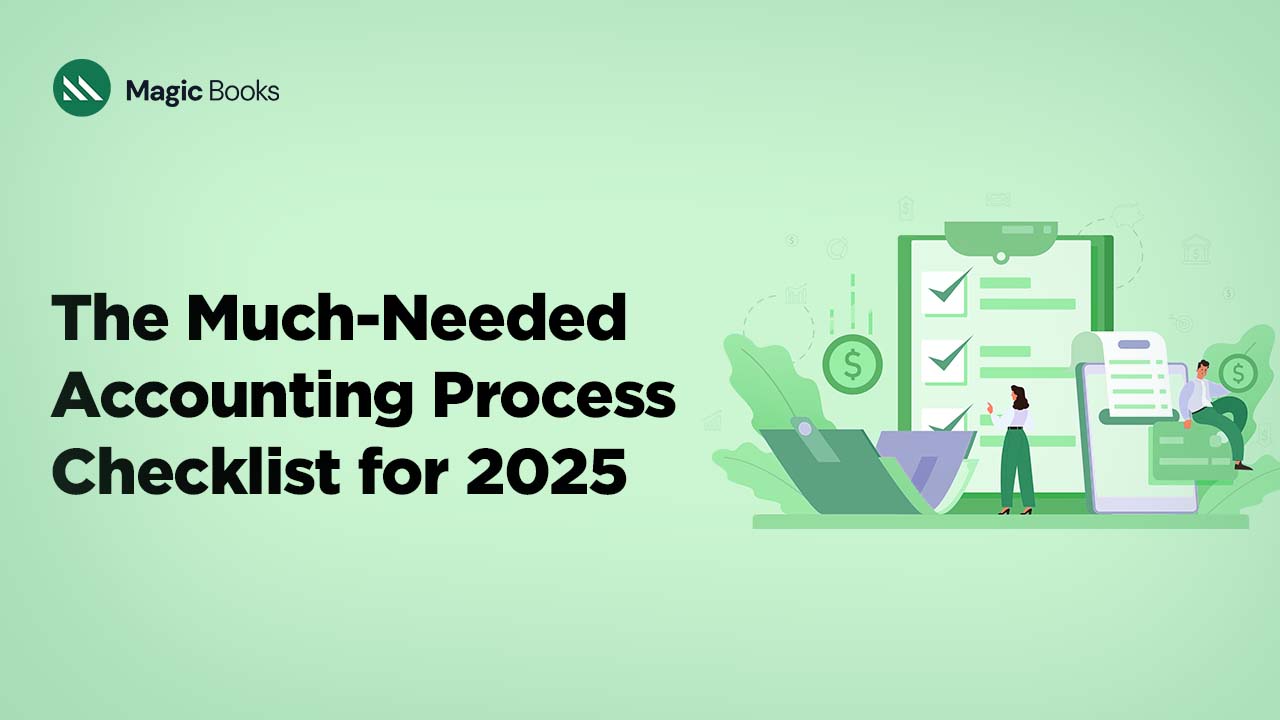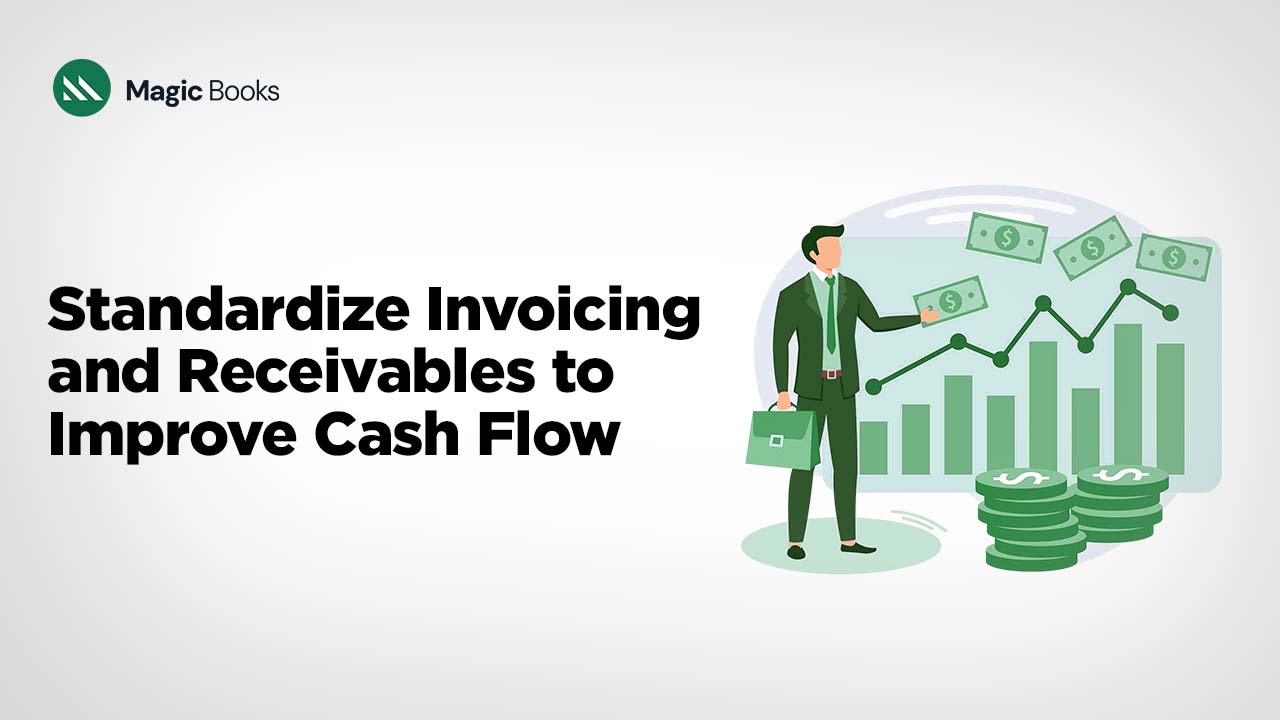If you’re a bookkeeper, financial advisor, or accountant, you completely understand how a single misplaced invoice or a missed reconciliation can snowball into a series of missed deadlines and irate clients. Seriously, human errors in manual data cause around 60% of firms to report monthly close overruns. So in this blog post, we’re going to give you a simple-to-use accounting process checklist so you can reduce errors, boost your productivity, and keep your clients informed on time. Whether you’re dealing with multiple client accounts or just keeping your own books organized, this guide is all about demonstrating to you how to streamline workflows, leverage automation to your advantage, and maintain the controls so you can remain compliant and profitable. By the end of it, you’ll have some simple steps—and a link to download a downloadable checklist template—to turn your accounting workflow from reactive to proactive.
Why an Effective Accounting Process is Important
Each minute and dollar you spend on accounting processes directly affects your company’s bottom line, reputation, and long-term success. When work processes are segregated or unaccounted for, you jeopardize your practice—and your clients—for a chain of problems:
- Firstly, reliability is the basis for client satisfaction. When there are delays in monthly closures or tax filings, there is frustration, loss of trust, and clients looking elsewhere. In a recent industry poll, 72% of small businesses included “timely financial reporting” as a top factor when considering their accounting service provider. Keeping commitments on a regular basis establishes your credibility as a dependable partner and attracts long‐term relationships.
- Second, regulatory compliance is not optional. The financial services sector is regulated by a matrix of standards—from the Sarbanes‐Oxley Act for public companies to AICPA and IRS standards for private companies. Ad hoc processes create gaps in your audit trail, raising the likelihood you’ll get hit with fines, penalties, or worse, an investigation. Yet, a documented process—with version‐controlled templates, reviewed steps documented, and automated audit logs—allows you to re‐create any series of transactions in seconds. Not only does this mitigate risk, but it lowers your cost of compliance by up to 30%.
- Third, efficiency drives profitability and scalability. Time-consuming, error-prone tasks such as redundant data entry, searching for lost receipts, or manually reconciling dozens of accounts consume valuable staff time. Each hour spent on mind-numbing corrections is an hour not spent on high-leverage activities such as financial analysis, advisory calls, or business development. Firms that optimize their processes and eliminate repetitive tasks, however, usually experience a 25–40% reduction in their month-end close cycle, which directly translates into lower labor costs and wider margins.
- And as a bonus, having procedures ensures that it is easy to onboard new clients and workers much more rapidly and with less stress. If all is documented in checklists, playbooks, or workflow software, training is just walking through the already-documented procedures rather than having to reinvent the wheel. This sort of consistency not only lifts everyone’s morale by reducing confusion and stress, but it makes your brand promise more credible: clients know what to anticipate, and the workers know exactly how to deliver it.
- Finally, in today’s advisory-based marketplace, having the flexibility to move from transactional accounting to strategic advisory positions as a cut above. With the time you save through efficient operations, you can dig deeper into financial analysis, project scenarios, and cash-flow management—turning your job from “number cruncher” to respected financial visionary. Bottom line: a well-oiled accounting process is the platform upon which you construct client loyalty, regulatory strength, operational effectiveness, and advisory mastery.
Step 1: Collection and Tabulation of Financial Information
A well-executed process begins with good inputs. Your input sources may include bank statements, invoices, POS exports, receipts, credit card feeds, and expense reports. Without standard folder structures and naming conventions, information is spread all over the place—spilled on email, on local drives, and scattered on different cloud platforms.
Start with setting up a communal cloud storage like OneDrive or Google Drive with folders properly named for each client, year, and document type (like “2025>Invoices” or “2025>Bank Statements”). Use a plain naming convention for the files:
ClientName_YYYY-MM-DD_DocumentType (e.g., SmithCo_2025-05-10_BankStmt.pdf).
Step 2: Recording Transactions Accurately
Once data is organized, the next step is precise entry. Regardless of entering transactions manually or importing transactions via QuickBooks, Xero, or Sage, utilize the same chart of accounts and unambiguous coding rules. Inconsistencies here cause misclassifications, skewed reports, and additional reconciliation effort in the future.
Key practices are:
- Having automated rules in your accounting system to classify the same-type recurring expenses (such as rent, utilities).
- Weekly scheduling of peer-review of journal entries to catch miscodes before month-end.
In addition to software automation, implement a two-stage approval for rare or high-value transactions. For instance, when you’re reporting an expense of more than $5,000, it requires a manager’s review prior to posting. This cross-check minimizes misstatements and gives you assurance in your numbers.
Tip: Use the comment features in cloud accounting software to add explanations or communications from suppliers to every entry with an audit trail for the future.
Step 3: Reconciling Accounts and Verifying Accuracy
Reconciliation is where the discrepancies are revealed—and where most companies stumble. Begin with your bank reconciliation: reconcile each ledger balance to your monthly statement, noting any items not brought down. Proceed with credit‐card reconciliations and intercompany balances. Don’t omit credit memos, prepaid expenses, and accrued liabilities for ensuring they are posted in the correct period.
Common differences are:
- Timing discrepancies (e.g., checks in transit).
- Recurring transactions.
- Interest or bank charges not accounted for in the books.
Fictional Narrative Example:
So, when ABC Advisory discovered a $500 discrepancy in their March reconciliation, they recognized it was due to an ACH payment being posted twice—first from the corporate card feed of the client and then as a manual post. After they realized what they had done incorrectly, ABC changed its automated rules and provided its employees with a bit of refresher training in order to not repeat the same error in April.
For large-volume accounts, employ a reconciliation dashboard to track outstanding items in real-time. Certain software provides the facility to automatically load bank statements into a reconciliation module, minimizing manual effort and preventing something from falling through the cracks.
Step 4: Generating Reports and Interpreting Insights
Alright, now that everything is organized, let’s turn all that information into stories. Make sure to prepare your standard fare: Profit & Loss (P&L), Balance Sheet, and Cash Flow Statement monthly or quarterly, whichever the client prefers. Then dig a little deeper in: examine the variances, trends, and those important performance indicators (KPIs) like gross margin or days sales outstanding (DSO).
Power BI, Tableau, or native accounting software visual dashboards enable clients to look at trends at a glance. A month-to-month cash burn line graph, for example, can warn when it’s necessary to update the budget.
When imparting wisdom:
- Spot anomalies (e.g., unexpected spike in COGS).
- Suggest action steps (e.g., cut vendor lead times or renegotiate).
A nice touch is to hold a monthly “insight session” with your clients—a brief 30-minute call where you review the reports, address their questions, and outline action items. This makes you more than an accountant, bookkeeper; it indicates you’re a strategic partner.
Top Tips on Keeping Your Accounting Workflow Running Smoothly
Maintaining your accounting processes in top working order isn’t a do-it-and-forget-it affair—it requires a steadfast commitment to process improvement, engaging your employees, and maximizing the appropriate technology to optimum levels. What follows are some specific recommendations to keep your business always doing things right and on time, every time.
1. Conduct routine process audits.
Quarterly Workflow Reviews: Meet every three months with a cross-functional team—accountants, bookkeepers, IT, and ops—and chart out your current end-to-end workflow. Chart handoffs and look for bottlenecks using flowcharts or process-mapping tools. For instance, if invoice approvals are consistently getting stuck in the “manager review” phase, drill down: Is it because of ambiguous approval criteria, too little automation, or overworked reviewers?
Key Performance Indicators (KPIs): Monitor averages such as days to close, number of reconciliation exceptions, and number of post-close manual journal adjustments. Set baseline targets (e.g., a 5-day close cycle, less than 2% of entries adjusted post-close) and monitor quarter to quarter.
2. Encourage a Culture of Continuous Improvement
Kaizen Mindset: Adopt the “Kaizen” mindset of lean manufacturing by requesting each team member to contribute incremental, small improvements. Conduct a monthly “innovation huddle” where the workers itemize pain points and propose ideas—whether a minor tweak in naming conventions or a new automation rule in your ERP system. Reward implemented ideas with praise or small rewards.
Lessons-Learned Documentation: Close post-mortem at the end of every month identifying what worked and where there were bumps. Documented corrective actions—e.g., reworking an automated bank feed or defining a coding rule—and assigning ownership and deadline.
3. Continue Investing in Staff Training
Role-Based Learning Paths: Develop personalized training curriculums for managers, senior accountants, and junior bookkeepers. Junior bookkeepers can learn advanced features of QuickBooks or Magicbooks bank-feed reconciliation module, for example, while managers undergo workshops on reading financial dashboards and consulting clients.
Cross-Training: Cycle employees through various tasks—data entry, reconciliation, reporting—in order to create redundancy and eliminate single points of failure. With more than one team member knowledgeable about each component of the workflow, you eliminate downtime caused by vacations or turnover.
4. Use Technology with Good Governance
Pilot Prior to Rollout: Whenever you’re thinking of deploying new tools—AI-based invoice scanners, RPA scripts, or analytics solutions—pilot them alongside existing processes for a minimum of one close cycle. Contrast exception volumes, accuracy percentages, and processing times before entirely decommissioning legacy approaches.
Governance Model: Define definite policies on who can create automatic rules, access key financial systems, or implement new applications. Create a change-management board to review and authorize changes to your supporting accounting software so that all change is traceable, tested, and reversible.
5. Create Strong Audit Trails
Version Control on Templates: Store all your spreadsheets, report templates, and checklists in a version-controlled repository (such as SharePoint or Git). This will enable you to roll back to previous versions and also track who did what if there is a problem.
Automated Logging: Allow for in-depth audit logging within your accounting systems, recording every edit of a transaction, user log-in, and approval action. Regularly scan those logs for anomalies—such as access late at night or large journal entries—to identify potential errors or fraud early.
6. Create Strategic Checkpoints
Pre-Close Dry Run: Have a “pre-close” milestone one week prior to month-end when major activities—data loads, first-level reconciliations, and variance analysis—are 80% done. This advance visibility enables you to address unscheduled issues without the stress of an impending deadline.
Client Status Updates: Use a standard client communications process: send a “Day 5 Post-Close” summary email capturing preliminary results, noting outstanding items, and outlining next steps. This not only reassures clients but also advances any overlooked transactions or inquiries before issuing final reports.
7. Build Advisory Skills Value-Add Workshops:
Conduct quarterly “financial insights” meetings—virtually or in office—with your most strategic clients. Use the platform to discuss trends, industry norms, and position your firm as proactive advisor instead of re-active bookkeeper. Data-Driven Proposals: When you’re selling new services, be sure to reference your own workflow metrics (such as, “We reduced reconciliation exceptions by 35% last quarter”) to demonstrate the ROI of any process enhancements.



